Are you looking for a solution to balance the optical power during various transmissions? Here’s your ultimate guide to fiber optic attenuators.
The Ultimate Guide to Fiber Optic Attenuators
Companies that use fiber optic links for data transmission know that the signal power in these optic devices can sometimes be above or below the desired level for ideal system performance. So they use various fiber optic cables to ensure that the power level is not high enough to damage the fiber optic network or low enough to not provide optimal long-haul data transmission.
The intensity of the optical power received by the optic device needs to be in a certain range. So, Fiber optic attenuators are one of the most common devices used to balance the power in optic systems.
This blog discusses how fiber optic attenuators work, their types, and their applications.
Introducing Fiber Optic Attenuators
Fiber optic attenuators are used with single-mode systems to decrease the power level of their optical signals. Unlike multimode systems that don’t have enough power output, single-mode systems require fiber optic attenuators to decrease the power level down to the desired level without impacting its actual transmission wave. In optical systems, too much power level can saturate the fiber optic receivers.
The deployment or installation of fiber optic attenuators is essential to decrease the power to an extent, resulting in optimal system performance. These passive devices keep the power level stable, debug the optic system performance, and ensure that the power level doesn’t go above the desired level or the receiver can get saturated.
How Do Fiber Optic Attenuators Work?
Even though fiber optic attenuators are used in various applications, it’s essential to understand the principles on which these passive devices work before deploying a fiber optic attenuator in your single-mode fiber optic systems. Fiber optic attenuators attenuate or balance out the input optical power and transmit the power level forward to ensure that high optic power ranges don’t disrupt the receiver at the other end.
These fiber optic devices are based on three different principles that allow them to ensure that the device works properly and its life isn’t shortened due to high bursts of power. Here are the three principles that define the working of fiber optic attenuators in single-mode optic systems, like DWDM network links or other long-haul links.
Gap-Loss Principle
The most common principle behind the working of fiber optic attenuators is the Gap-Loss principle. According to the Gap-Loss principle, a longitudinal gap has to be created between two connected optical fibers so that the optical signal passing from one fiber to the other can be decreased significantly.
By following this principle, the transmitting optical fiber spreads out the light when it leaves the fiber, which decreases the optical signal received by the second fiber. Gap loss usually occurs when there is a space, breakage, or gap between two fibers, which doesn’t prevent the optical signal from being transmitted but instead impacts the power level.
In fiber optic attenuators, the Gap-Loss principle is followed. The passive device is set on an in-line configuration and placed close to the transmitter, allowing the transmission of the right optical signal or power level. Like the Gap-Loss principle, a gap is created between both optical fibers to reduce the level of the transmitted optical signal, preventing the receiver from being saturated.
When the light starts to spread after leaving the transmitter fiber, a large part of the light gets lost due to the gap. This means that a decreased level of the optical signal reaches the receiving optical fiber, showing how the fiber optic attenuator successfully implements the Gap-Loss Principle. However, a fiber optic attenuator with reflective properties is used to achieve maximum results and ensure that the light doesn’t spread out too much, which would result in no optical signal reaching the receiving fiber.
Absorptive Principle
The absorptive principle or absorption revolves around the fact that each material or sample absorbs a specific range of radiation. Their rate of absorption also called the absorption spectrum, depends upon the molecular or atomic composition. This means that the Absorptive Principle focuses on the idea that each material absorbs a different amount of radiation. The Absorptive Principle also states that different materials absorb and transform energy into other forms.
In a fiber optic attenuator, an optical fiber is designed that absorbs a high amount of energy or radiation. According to the principle, a fiber optic attenuator is designed using materials that lead to a reduction of power. These materials, which absorb a large amount of optical power, are usually inserted in the optical path, allowing them to absorb the excess energy.
This means that the fiber optic attenuator only transmits energy that is required by the optical fiber receiver. Even though the process seems simple (using materials that absorb excess optical power), it works effectively to ensure that the ideal amount of power is being received by one end and transmitted from the other.
Reflective Principle
The third principle that fiber optic attenuators follow is the reflective principle. According to the reflective principle, the scattering of the light in fiber optic attenuators can lead to significant power loss, making this optical passive device effective. However, the scattered light can result in interference in the working of the optical fibers, disrupting the process of transmitting and receiving the optical signal.
Therefore, the fiber optic attenuators are designed using materials with ideal reflective properties. These materials only allow a specific amount of light to scatter, preventing it from interfering with the transmitting or receiving optical fibers. The Reflective Principle allows fiber optic attenuators to plan the scattering, preventing any negative impact of unplanned scattering on the working of the single-mode optical systems.
What Are the Common Types of Fiber Optic Attenuators?
Even though all fiber optic attenuators are based on the same principles, each of them has different characteristics, which sets them apart from other fiber optic attenuators available in the market. Usually, they’re distinguished based on the type of cable and connector, but you can also get a fiber optic attenuator based on a different wavelength, polish type, and attenuation value. Based on all these characteristics and the functionality of fiber optic attenuators, here are some of the most common types of these passive devices available in the market.
Fixed Optic Attenuators
One of the most widely-used types of fiber optic attenuators is fixed optic attenuators. As the name implies, this attenuator has a fixed or unchanged attenuation level through transmitting and receiving optical power in the optical fiber. Besides using the Gap-Loss, Absorptive, and Reflective Principles, the fixed optic attenuator also uses several other principles for the effective working of the attenuator and a leveled distribution of the optical signal.
These principles include using a combination of misaligned spices and doped fibers to achieve the desired results. This attenuator usually has a fixed level of attenuation, ranging from 1 to 30dB. Therefore, this level can be 5dB, 25dB, 1dB, or even 30dB. Fixed optic attenuators are further divided into two other types, as discussed below.
In-Line Fixed Value Attenuator
In-lined fixed value attenuator, also called an in-line fixed optic attenuator, represents a fiber patch cable that looks plain. In this attenuator, the attenuator is installed into patch cables for use in various telecommunications and networking procedures and applications.
Connector Type Fixed Value Attenuator
Unlike the in-line fixed value attenuator, the connector type fixed optic attenuator represents a bulkhead connector. A female-type adapter is installed on one side of the bulkhead fiber connector, while the other has a male-type adapter, also called a male plug connector. The female-type fiber optic plug connector allows the fixed optic attenuator to be plugged into the patch cords. In contrast, the male-type adapter connector on the other side lets the attenuator be directly plugged into the receiving device.
The receiving optic device is usually presented in a patch panel. Besides connector type fixed value attenuators with male and female connector plugs, connector-type attenuators with female-to-female transmission are also available in the market. These optic attenuators can dual-function as attenuators and adapters, making them the ideal choice for use in telecommunication devices and networks, Community Antenna Television (CATV) systems, and Local Area Networks (LANs).
Optical Variable Attenuators
As the name suggests, these fiber optic attenuators have a variable range of optical power throughout the process. The optical variable attenuators are designed using a variable density filter, which gives it the variable characteristics. Since it offers a dynamic range of optical power, it’s also wavelength and mode insensitive, as these variables are often impacted by the fixed range of power in fixed fiber optic attenuators. Unlike other types of fiber optic attenuators, variable optical attenuators are usually used for testing and measurement processes.
However, besides these two procedures, one of the most commonly-known applications of optical variable attenuators is the Erbium-Doped Fiber Amplifier (EDFA). In this amplifier, the variable optical attenuator balances the optical power in various channels, ensuring the amplifier has an equalized power.
The variable optical attenuators are further divided into two subtypes, as discussed below.
Stepwise Variable Attenuators
As the name suggests, stepwise attenuators can change the optical power level of an attenuator in planned steps. This means that, at every step of the process, the attenuation can be changed by 0.1dB, 1dB, or 0.5dB. This allows this variable optic attenuator to change the level of optical power or signal, only transmitting decreased power required by the optical receiver.
Continuously Variable Attenuators
In contrast, continuously variable attenuators do flexible adjustments throughout the process, using them to maintain the desired level of attenuation. Based on various changes, continuously variable attenuators can accommodate their level of attenuation whenever required, preventing the attenuator from being disrupted by a changed level of the circuit. These attenuators are used in operations or applications that are constantly changing, allowing the process to be completed without interruptions.
Single-Mode Fiber Optic Attenuators
Besides being distinguished based on the fixed or variable level of attenuation, fiber optic attenuators are also classified based on their modes. Single-mode fiber optic attenuators are used in single-mode optical systems or cables.
Multimode Fiber Optic Attenuators
Since most fiber optic attenuators work for single-mode optical systems or cables, a multimode fiber optic attenuator was designed for multimode optical systems. These attenuators regulate the power level in multimode cables, allowing the receiving devices to last long and work effectively.
A Guide to Choosing the Right Fiber Optic Attenuator
Since many fiber optic attenuators are available in the market, choosing one that matches your requirements is essential. Here are some factors you should consider when choosing a fiber optic attenuator.
Type of Fiber Optic Cable
You need to consider the type of fiber optic cable you use before selecting an attenuator. If your cable is single-mode, opt for a single-mode attenuator, while multimode fiber optic attenuators work for multimode cables.
Wavelength
Different fiber optic attenuators work for varying wavelengths. These include 850nm, 1550nm, and 1310nm. Pick an attenuator that attenuates your required wavelength.
Attenuation Value
You also need to consider how much attenuation you need to pick the right fiber optic attenuator. If you pick an attenuator with a higher attenuation value than required, the optical signal won’t be transmitted properly. However, if the fiber optic attenuator has a lower attenuation value, the receiver side will be overloaded by the optical signal, resulting in device damage suddenly or over time.
Get Fiber Optic Attenuators from Fibermart
With the help of fiber optic attenuators, you can regulate your telecommunication devices and fiber and networking solutions. At Fibermart, we provide fiber optic products, like optical isolators and DWDM modules, to businesses across the United States, Asia, and Europe.
We have worked with leading tech companies like Nokia, IBM, Huawei, Apple, and Amazon, helping them benefit from our fiber optic solutions. Whether you want to buy a fiber trunk cable, fiber patch cable, fiber optic attenuator, optical switch, or fiber adapter, check out our collection and buy them at affordable prices.
Call us at (205)-282-9089 or get in touch with our experts to ensure that you select the right fiber optic attenuator.











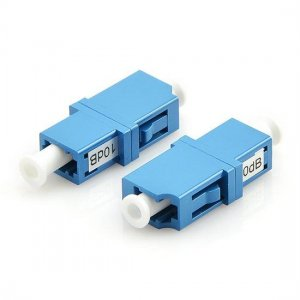
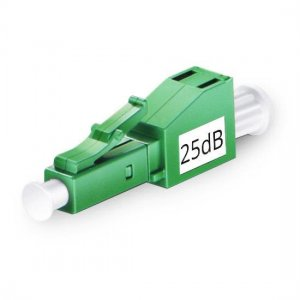



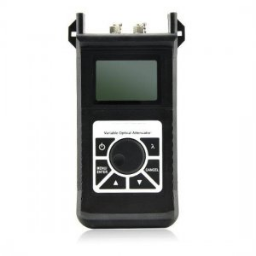
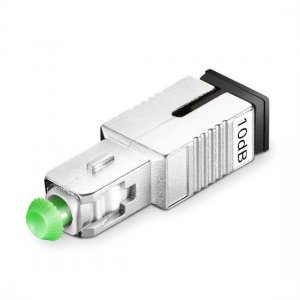
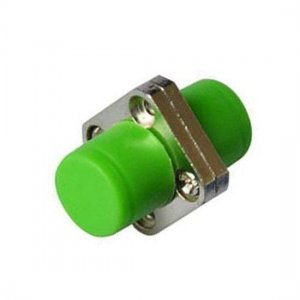
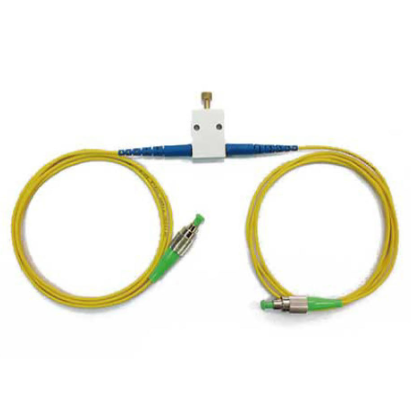
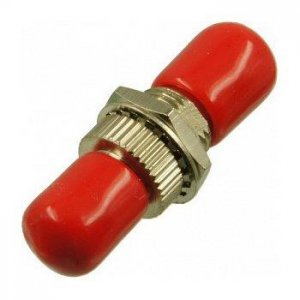
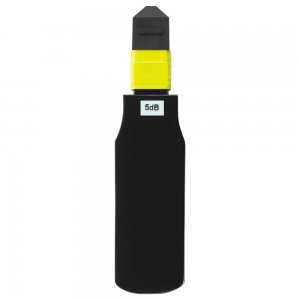




No comments have been posted yet.